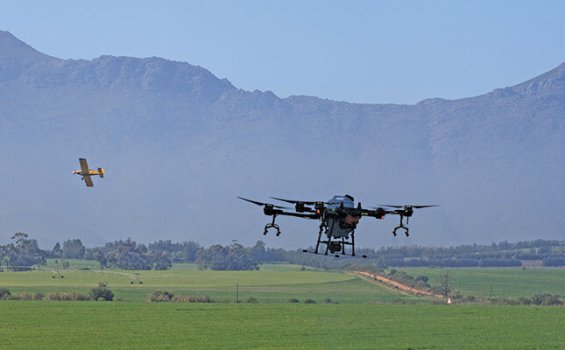Sugar cane responds well to a ripening spray at about eight weeks before harvest. But Tim Wise, who grew up on a sugar cane farm in KwaZulu-Natal (KZN), remembers how his family struggled with uneven and inaccurate delivery of this spray by crop-spraying aircraft.
Sugar cane in South Africa is usually cultivated on hilly terrain with steep gradients, and the average field size is small, at around 6ha. These factors, combined with coastal winds and obstacles such as electricity pylons, natural bush lines and cell phone towers, make low-level flying difficult and dangerous.
To make matters worse, the ripening spray is often essentially a low-concentrate herbicide, so it is crucial to prevent spray from drifting onto other crops or neighboring cane fields at a different growth phase.
Together, all these factors frequently result in inaccurate application by aeroplane, and hence failure to achieve full and even coverage over the crops requiring ripening.
The problem led a group of KZN farmers to fund a world tour in 2016 to investigate drone technology as an alternative to aircraft for crop spraying.
Continue reading: https://www.farmersweekly.co.za/agri-technology/machinery-equipment/new-generation-crop-spraying-drones/
Sugar cane in South Africa is usually cultivated on hilly terrain with steep gradients, and the average field size is small, at around 6ha. These factors, combined with coastal winds and obstacles such as electricity pylons, natural bush lines and cell phone towers, make low-level flying difficult and dangerous.
To make matters worse, the ripening spray is often essentially a low-concentrate herbicide, so it is crucial to prevent spray from drifting onto other crops or neighboring cane fields at a different growth phase.
Together, all these factors frequently result in inaccurate application by aeroplane, and hence failure to achieve full and even coverage over the crops requiring ripening.
The problem led a group of KZN farmers to fund a world tour in 2016 to investigate drone technology as an alternative to aircraft for crop spraying.
Continue reading: https://www.farmersweekly.co.za/agri-technology/machinery-equipment/new-generation-crop-spraying-drones/

